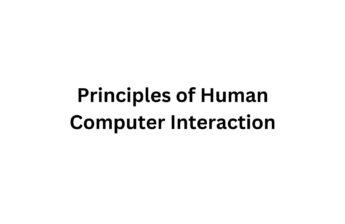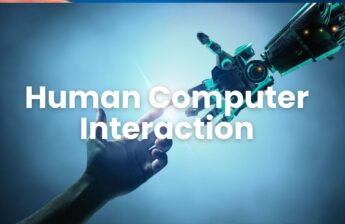What is difference between Masters in UX Designs and Masters in Human Computer Interaction? We have come up with this guide to answers your questions.
Masters in UX Design
The study in ux design focuses on creating user-friendly, multi-modal, multi-platform user interfaces that are easy to use and enhance the user experience through analysis, design, prototyping, and assessment.
What is UX Design?
It involves the steps of designing a website or application to attract specific target user groups. It evaluates user feelings about the product, including ease of use, aesthetics, and perceived value.
Responsibilities of UX Designers:
- Testing various approaches to solving user problems.
- Ensuring logical flow within the product and keeping up with technological advancements.
Interdisciplinary Nature of UX Design:
- Incorporates elements from various disciplines like graphic design, visual arts, and information technology.
- Draws from Psychology, Anthropology, Architecture, Sociology, Industrial Design, and Cognitive Science.
Topics Covered in UX Design Degrees:
- UX processes, user research, and strategy.
- Design patterns, usability testing, and design tools.
Learning Outcomes for Future Professionals:
- Understanding user problems and effective ways to address them.
- Integrating graphic elements with application goals.
- Acquiring effective testing techniques.
Career Opportunities for UX Design Graduates:
- UX researcher.
- Information architect.
- Interaction designer.
- Visual designer.
- Usability tester.
Masters in Human Computer Interaction
The study of human computer interaction focuses on comprehending how individuals interact with digital technologies. User research and design are being developed by international enterprises to enhance their goods and services. In this cutting-edge industry, graduates are in greater demand.
What is Human Computer Interaction?
Human-Computer Interaction (HCI) Focuses on building adaptable interfaces that cater to people’s needs. It aims to create simplified interfaces for maximum user satisfaction.
Tasks of HCI Professionals:
- Analyzing user tasks to simplify their job.
- Integrating auditory systems such as sound and speech recognition, and visual elements like graphic animations.
Interdisciplinary Nature of HCI:
- Combines theories from Computer Science, Ergonomics, Psychology, Cognitive Sciences, and Linguistics.
- Shares similarities with disciplines like Robotics, Materials Engineering, and User Experience Design.
Learning Outcomes for HCI Students:
- Understanding principles of cognition and perception for effective interface design.
- Developing data collection and troubleshooting skills.
- Understanding potential issues in interacting with specialized technology.
Curriculum in HCI Programs:
- Elements of visual design for creating program prototypes.
- Basic research skills development.
Career Opportunities for HCI Graduates:
- Usability engineers.
- Information architects.
- Interaction and interface designers.
- Web designers.
- UX designers.
- Visual analysts.
- Interaction architects.







